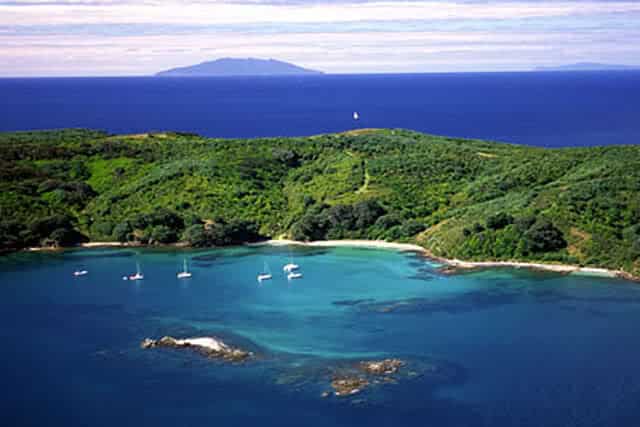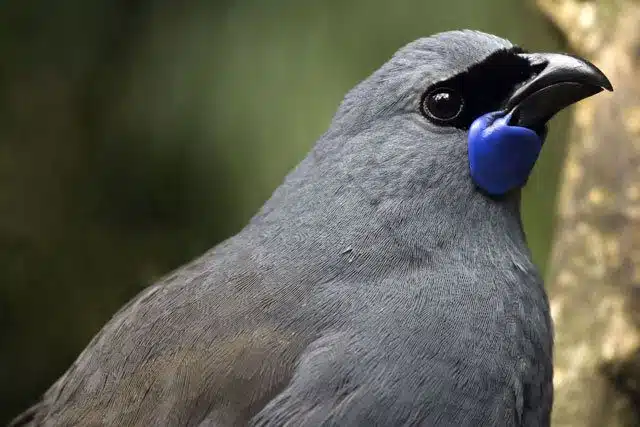Tititiri Matangi is one of Auckland’s hidden gems, especially for nature lovers. This open sanctuary is a haven for native wildlife, in particular bird life and the place is absolutely humming with activity all year round. The story behind Tititiri Matangi is a great one and there is something very Kiwi about the whole project – Auckland residents getting stuck in and bringing the island back to its glory days.
The history of Tiritiri Matangi Island
Sometimes nature needs a little helping hand. After 120 years of farming, the stunning wildlife sanctuary of Tiritiri Matangi had been stripped of 94% of its native bush. The 220-hectare island was no longer home to the native wildlife that once thrived in an environment safe from predators but that was all to change. Between 1984 and 1994 volunteers from the Auckland area replanted between 250,000 and 300,000 trees, helping to bring back Tiritiri Matangi’s original forest. Now the island is made of of 60% native forest and 40% has been left as grassland for species preferring open habitat.
Where is Tiritiri Matangi Island?
Just 4km off the coast of Whangaparaoa Peninsula and reached via ferry from Auckland or from coastal Gulf Harbour (around an hour’s drive north of Auckland), Tiritiri Matangi is now an open bird sanctuary that is home to a startling array of incredibly rare birds and reptiles, including the flightless takahe and the tuatara, New Zealand’s ‘living dinosaur’. For a rare opportunity to hear such an intense melody of birdsong, and to spot birds and reptiles you’re unlikely to have ever seen before (and possibly never will again), a visit to this ‘lost world’ is a must during your stay in Auckland.
What can I see on Tiritiri Matangi?
Other than the tuatara and the takahe, highlights include little blue penguins, the incredibly rare stitchbird, the constant chatter of the loud kakariki birds, the brown teal (one of the world’s rarest ducks) and the rare kokako, which many say has the most beautiful song in the world. More recently, special speakers have been installed at another Open Sanctuary in Shakespear Regional Park which sits directly opposite Tiritiri Matangi at the end of the Whangaparaoa Peninsula. Extensive work has been carried out n Shakespear to help remove all predators and the sanctuary is completely fenced in. The introduction of the speakers encourages native birds from Titirtiri MAtangi to make the short flight across the water to Shakespear, helping to reintroduce these native birds to the mainland.
Visiting Tiritiri Matangi
If visiting Tiritiri Matangi for the first time, booking onto one of the island’s guided walks for a small additional fee of NZ$5 is highly recommended. With a choice of two routes, one of which is longer than the other, your guide will lead you from the wharf where the ferry docks, up to the island’s historic lighthouse (once the brightest in the southern hemisphere). During the walk through the dense forest, the guide will point out and name the many different species of birds, native trees and reptiles, and will identify the bird calls which sing all around you. So that the Supporters of Tiritiri Matangi know how many volunteer guides to allocate, book your tour with 360 Discovery when you book your ferry tickets. Ferry tickets cost NZ$66 (Auckland pier 4) or NZ$49 (Gulf Harbour) per adult, NZ$29 or NZ$24.50 per child and the service operates every Wednesday to Sunday and public holidays.
Widely regarded as one of the most successful volunteer conservation projects in the world, the bird sanctuary of Tiritiri Matangi makes a fascinating trip from Auckland (where you can pick up an Auckland car rental!). Bring a packed lunch, sturdy shoes and sharp eyes and explore the island that is helping to bring back native birds from the brink of extinction.



